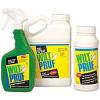Winter Feeding For The Birds!

Cold flurry days and long brisk nights of winter can confine most birds, but some take pleasure in this time of year. One way to attract these feathered friends is through a natural food selection supplied by a bottomless feeder or a suet feeder. The bird species that attend your feeders in the winter are different than those that attend your feeder in the summer. Some species you can see year-round are Cardinals, Chickadees, & Sparrows. Other species that are popular in the Rochester area during the cold winters are the Blue Jay, the White-Breasted Nuthatch, the Carolina Wren, and the American Goldfinch.
There are three main choices of food: Large Seeds, Small Seeds, and Suet
Large seeds include black-oil sunflower, safflower, peanuts, shelled corn, and cardinal mixes. The birds that favor these large seeds are Northern Cardinals, Blue Jays, Chickadees, House Finches, American Goldfinches, and Nuthatches. The larger seeds can be very popular to attract the birds in the winter season. Small seeds include niger, thistle seed, and millet seed. This is an excellent food source for Black-Capped Chickadees, Goldfinches, Purple Finches, and Redpolls. Suet and fruit mixes are an excellent source of fat for birds in the winter. This is necessary for them to maintain consistent body temperature and store energy. This type of food is attractive to Woodpeckers, Black-Capped Chickadees and Nuthatches.
Here at the Garden Factory®, we have a wide selection of bird food and a variety of bird feeders. We have bird food that ranges from small seeds, suet, and larger seeds. We also have bird food that is specific to the type of bird such as; Cardinal Wild Bird Mix containing mainly sunflowers, Finch Small Songbird mix containing millet seeds, Chickadee Wild Bird mix containing peanuts and pistachios, and many others! We sell individual bags of seed allowing you to create your own special bird mix. The bags of food we carry range from 3lbs to 40lbs.
We have bird feeders and suet feeders ranging in all different sizes, and some even have a combination of food and suet. We suggest putting the feeder in a sheltered place where they are not exposed to strong winds, and are out of reach from other predators. Knowing more about our local birds and their feeding habits will not only ensure their survival through our harsh winters, but also gives us hours of riviting bird watching.







